Topics:
Never Miss a Beat - Get Updates Direct to Your Inbox
FILTER:
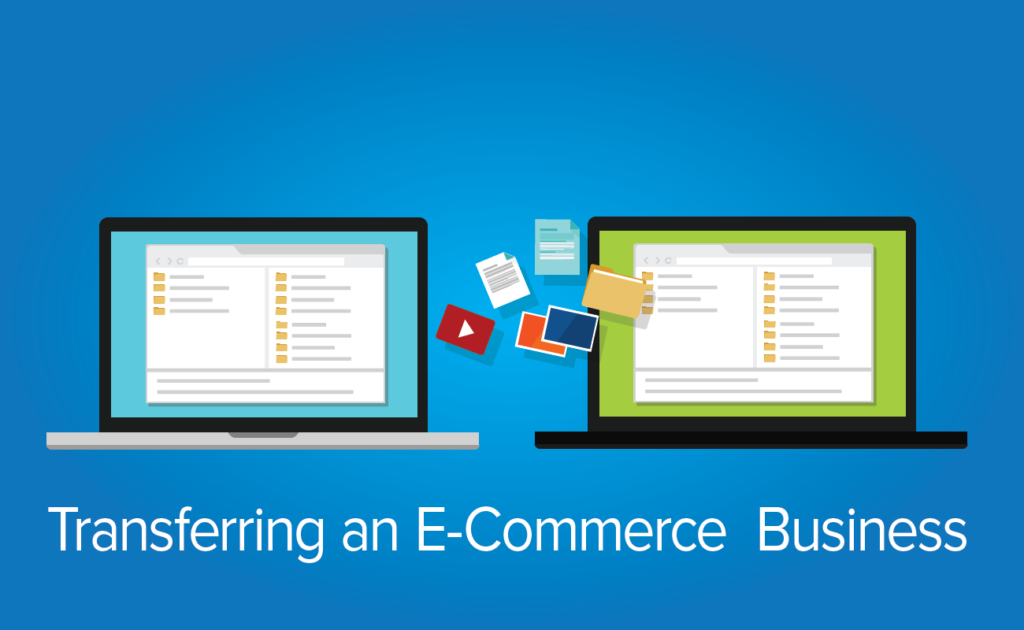

Selling Your E-Commerce Business: How To Plan The Transition To The New Owner
By Quiet Light
If you are selling your internet business, there are few moments more exciting (and nerve-wracking) than the days leading up to your final closing.
If you have managed to get through the often tedious processes of preparing your business for sale and managing due diligence, the only hurdle you have left is planning the transition of your business to the new owner.
Getting this last step right is important. In most cases, transferring the ownership of your business (and all of its accounts) should take a day, maybe two at most. But if you fail to plan, or if something unexpected pops up, it could stretch into several days, or even a week or more.
These rare prolonged transitions can be extremely stressful for both you and the person buying your business. This is especially true if you are using escrow to hold the closing funds.
Our Case Study of a QLB Client Who Managed Her Transition Remarkably Well
This is a case study of one of my recent clients, Jana, who managed to turn an ordinarily stressful process into something easy and straightforward. For that reason, it is worth checking out.
If I write about a client (something I don’t do terribly often), I try to keep a certain level of confidentiality for everyone involved. Therefore, I won’t get into too much detail about Jana’s business.
What is important for this case study, is to know that this was not just a small simple business. This was a well established e-commerce business with inventory, supplies, vendor relationships, key contractors, multiple accounts, and a custom ERP software system. .
For a business like Jana’s, I would expect a transfer like this to take a few days. But in this transfer, the bulk of the transfer took less than three hours.
As impressive as it is to transfer a business like Jana’s in three hours, what impressed me more was her organization and the ingenuity she brought to the transition, elements I’d like to review in this blog post.
In this case study, I’ll review:
- How she combined Google Chrome and Lastpass to transfer over key accounts with a single click (and how this helped the the post-close training)
- How her attention to organization and detail gave the buyer a host of useful documentation
- How she and the buyer transferred 60+ domains instantly
- How a business decision made well before she decided to sell made part of the transition extremely easy
- Her views on how to handle transferring key vendors
Buyers Love Organized Sellers (and This Helps You)
Being organized benefits both the buyer AND the seller because:
- If money is held in escrow, the transfer is faster and you get access to your money faster
- It helps reduce tension during a very stressful time, since the buyer has wired a significant amount of money for your business.
- It can reduce the amount of training needed.
As part of this case study, we chatted briefly with the buyer of Jana’s business. Walker has bought multiple businesses in the past, so he is no stranger to transitions. He appreciated the organization and level of detail Jana, especially compared to other deals that he’s come across.
Some small business owners just don’t have their shoe laces tied” said Walker. “I’ve walked away from deals right from the start because it’s not organized.
Being organized also helped to establish trust between Jana and Walker, which helped to speed the transition process up considerably.
Having organized information allowed us to focus on the conversation and move the real things forward because the organization provided transparency” said Walker. “People in glass houses have nothing to hide”.
How To Use Google Chrome & LastPass To Transfer Accounts With a Single Click
For Jana’s business, there are a handful of browser tabs that she would use every day to run her business.
These were:
- Gmail
- The business’s Shopify account
- Individual sales channel accounts (there were a few)
- PPC Advertising accounts (there were a few)
- Inventory and order management system
- Main website homepage (just to make sure it was still up and running)
In most transitions, a seller would create a document with a list of URLs for each account along with usernames and passwords, like this:
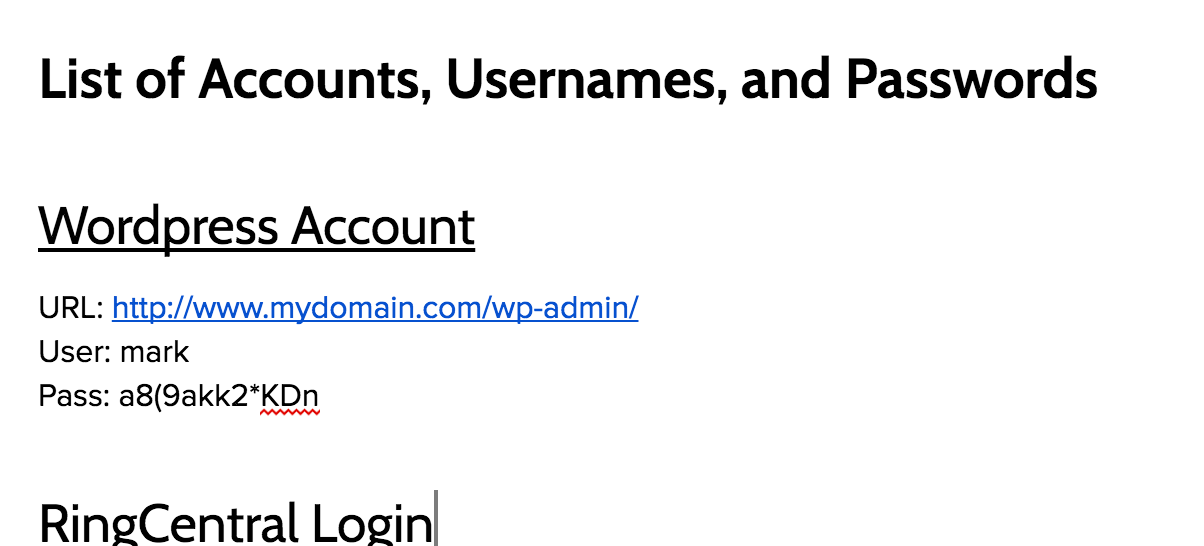

During the transition, the buyer would need to log into each account, change the passwords, and keep a record of the new account details.
For Jana’s transfer, however, she set up a new Google Chrome user that would open all of her tabs when Chrome started. In other words, after she had the user setup, she just had to give that Chrome username and password to Walker. When he logged into Chrome with that username and password, all of Jana’s most important tabs would automatically load.
To add a new user to Chrome, go to Chrome Settings and choose “Add Person”.
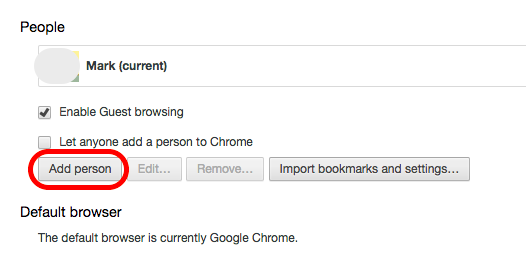

The box will now open for you to register a new user.
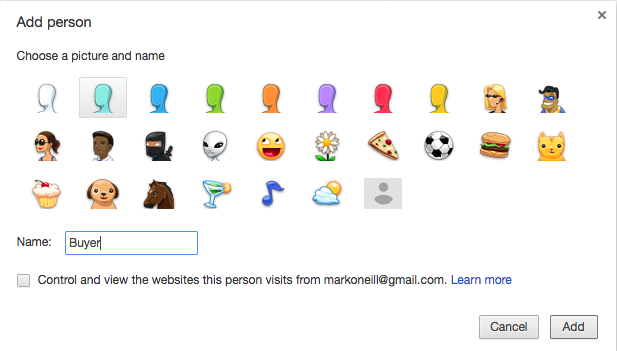

Then it is just a case of clicking on the username in the top right hand corner of Chrome and choosing the profile you want to use.
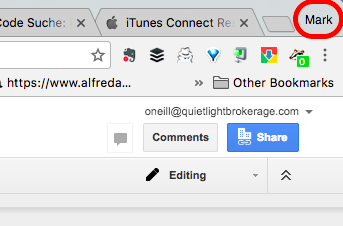

In the settings, you can have Chrome open a prearranged set of tabs every time the browser opens. Save that as the default, and every time Chrome starts up, your key websites load with the essential URL’s needed to run your business.
Put All Passwords Into Lastpass, Then Transfer That Account
Of course, knowing the important websites is not enough to transfer accounts. Walker needed the usernames and passwords.
Using the password manager Lastpass, Jana made the username and password transfer a trivial process. With Lastpass, Walker got all of the usernames and passwords organized into folders. Plus, using the Lastpass plugin, Lastpass would automatically log him into the default tabs Jana already set in Google Chrome.
To use Lastpass, you’ll need to set up a free account (I use their paid version which gives me the added benefit of logging in automatically on my Android phone). Once your account is set up, add the Lastpass Chrome extension.
From there, you’ll be able to add websites to your LastPass vault. Lastpass will also give the option to add a website automatically when you log in for the first time.
LastPass Removes The Need To Transfer Password Lists Over
One of the really time-consuming tasks of transitioning a business over – and the one which has the most potential for errors to creep in – is transferring passwords.
[note align=”right” title=”Bonus Benefit of Lastpass” color=”blue”]
Password management systems are really useful with all the passwords we need to remember. One additional benefit of using a system like Lastpass in your business is the ability to share a folder with your contractors or employees without giving them the actual passwords. Chrome will automatically log them into the websites they need, without showing them your password. This gives you complete control over the security of your accounts.
[/note]
Typos are a common occurrence, so the more difficult the password, the bigger the chances you are going to trip up typing )yg{**%$4Ey;{wCdWKyk~3tjM. This is where using a password manager becomes a masterstroke. There are many password managers available but Jana used LastPass to great effect, since it already integrates into Chrome.
All of the passwords needed to run the business are inside Lastpass. Using the customized Chrome user login with the Lastpass Chrome extension, when Walker logged in, not only did he have the most important websites on his screen, he was instantly logged in as well.
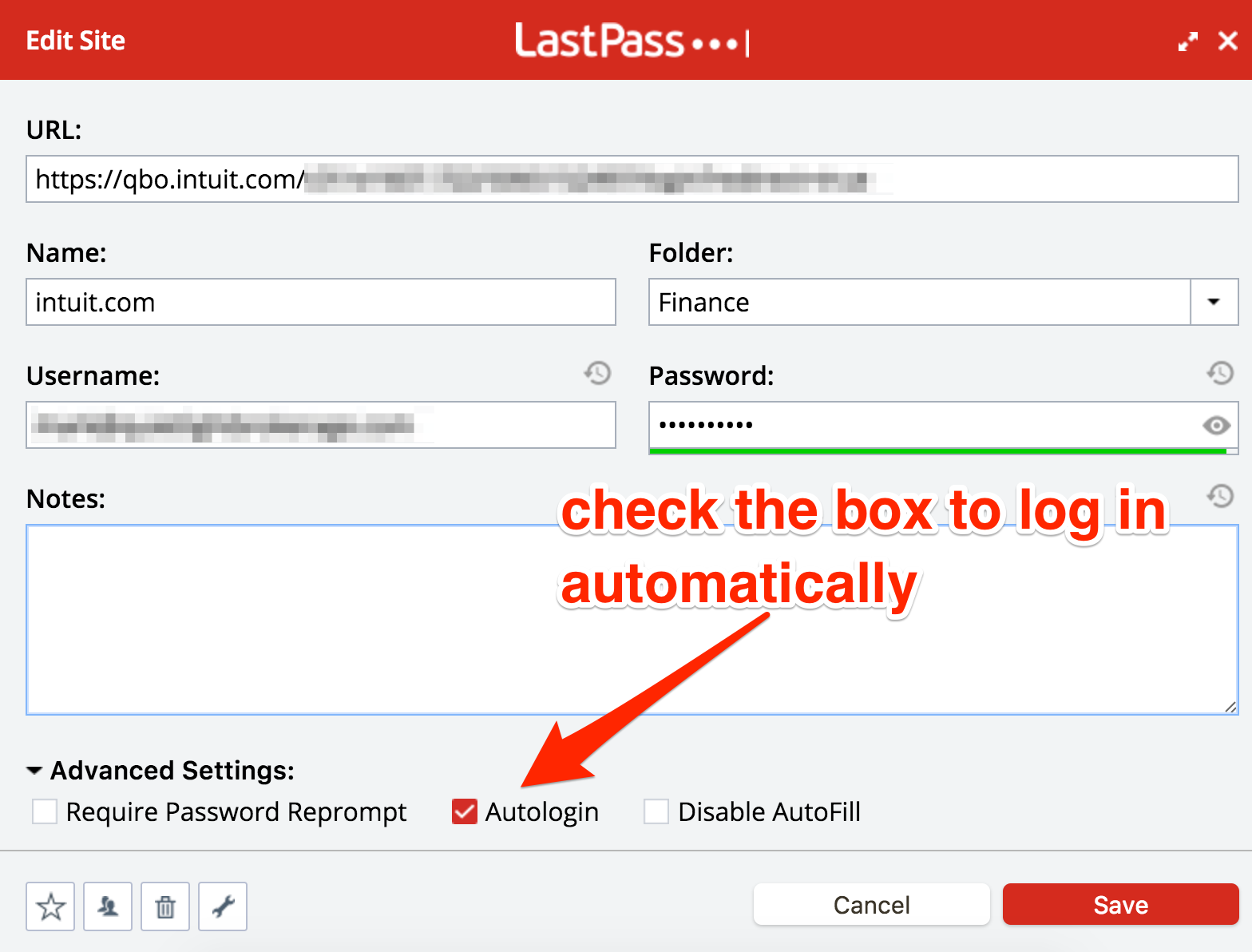

LastPass Helped With The Training Period
This method also enabled Jana to help the new owner with the training period. When both he and Jana logged into Chrome (and LastPass logged them into the sites), they both saw the same things. Emails, customer orders, website issues, and more.
If the new owner had a question, Jana could instantly see on her own screen what he was talking about.
LastPass Creates a Hierarchical Folder Structure Of Your Tools & Sites
Lastpass allows you to create folders and sub-folders, so even if you decide not to use the auto-login feature, you can still organize your tools, references, and sites into their own folders, for easy browsing.
Jana’s hierarchical-folder structure looked like this:
- Businesses (main folder)
- / NAME OF BUSINESS (sub-folder)
- /Advertising (AdWords, Bing PPC, etc)
- /Analytics (google analytics, and other analytics software)
- /Email (all sales and support email addresses)
- /Financial (bank accounts, credit cards, merchant services, etc)
- /Marketplaces (Amazon, eBay, Sears, etc)
- /Shipping (UPS)
- /Tools (general)
- /Website Admin (i.e. GoDaddy, Shopify, hosting, etc)
- /Warehouse
How Jana & Walker Transferred 60 Domains In Minutes
Domain names are one of the few semi-tangible assets that transfer in an e-commerce acquisition. Surprisingly, a domain can be one of the most frustrating things to transfer when you sell your business.
This is because there is a significant amount of security around the ownership of your domains. As a result, if you attempt to transfer a domain between two registrars and two accounts, the process can take quite a while.
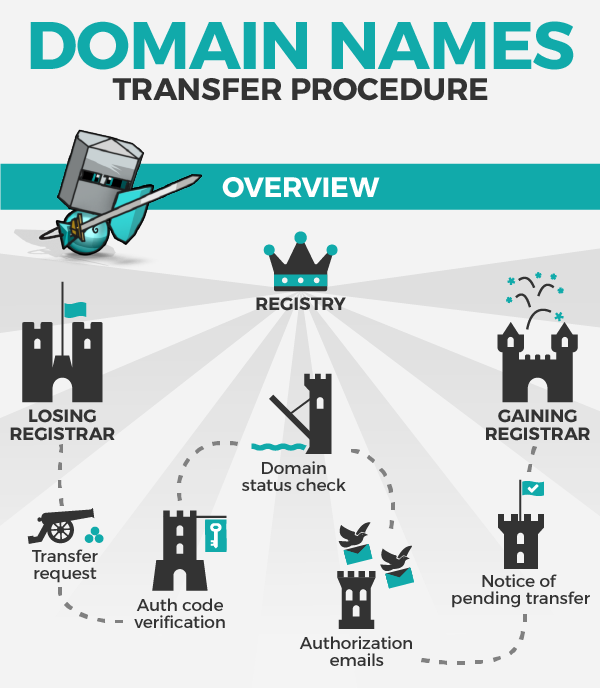

Source: Gandi.net
Rather than go through this headache, Walker set up an account with the same registrar that held Jana’s domains. So, rather than transfer the domains between registrars and wait for authorization codes and verifications, Jana just transferred Walker the entire GoDaddy account.
First, she was prepared in that she had a GoDaddy account just for the business-related domains (no personal domains or other unrelated domains in there). Then all she had to do was change the billing and contact information, and give Walker the password (through LastPass, of course). So with one step, the buyer had instant control/ownership over all 60 domains!
Detailed Documentation Uploaded to Dropbox
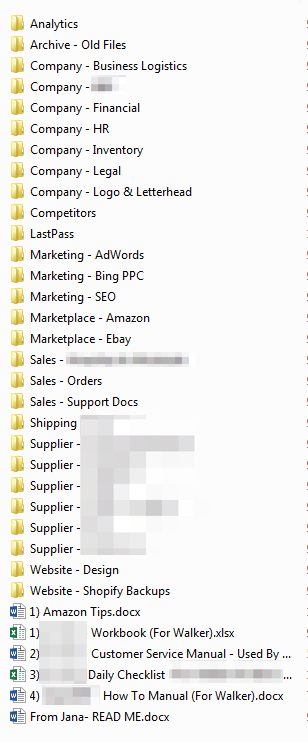

Creating strong documentation of procedures, user manuals, contractor roles, contact lists, and company overviews are invaluable for buyers. Even creating simple screencasts of common procedures can save hours of training.
In Jana’s case, she created an exhaustive list of folders containing all the documentation any buyer would need for her business.
These folders were then uploaded to a new Dropbox account which she could add to the LastPass account, giving Walker instant access to exhaustive documentation and resources.
In addition to these folders, Jana created an organized dashboard for Walker which recapped most of the information he learned in his initial discovery and through the due diligence process.
Using Third Party Contractors to Enhance Transferability
While Jana’s use of using Lastpass & Chrome made the bulk of the transition easier, the way Jana used third party contractors helped make the transfer an even smoother process.
As she built her company, Jana hired various third party individuals or companies to fill key roles. This included warehousing, bookkeeping, customer service, and development. Most of these contractors had other sources of income, who were not entirely dependent on Jana’s business, but were also filling a role in her company that she could replace if absolutely necessary.
Most of my staff were third party companies so they all wanted to keep the business and were not personally attached to me” said Jana. “This was very much by design. I never want to have any full time employees, or people personally dependent on only working with me. It’s too much pressure for me personally and also it makes the business non-saleable.
Since these third party companies and contractors had well-defined roles, it allowed the transition to happen without any disruption to the business. The company’s customers did not experience any issues when the business changed ownership.
The employee part was totally seamless, to the point that I made the joke a week later that it felt like I never existed at all” said Jana. “My main employees had such an ingrained, well developed daily/weekly routine that it didn’t matter who signed their check at the end of the week. Within a couple of weeks it really felt like they never needed me to begin with”.
This was obviously a decision that Jana made well before she ever decided to sell her business. In past blog posts, I’ve talked about how simple decisions you make years before you decide to sell can have a significant impact on the final transaction.
Conclusion
Transitioning your business to a new owner can be as easy or as difficult as you want it to be. There are so many hacks and shortcuts you can take to make a long difficult process into one which takes no time at all. Hopefully Jana has inspired you to think about your own transition ideas, or about how you can refine and improve hers.
Please tell us your ideas in the comments section below. We would love to hear your thoughts.





